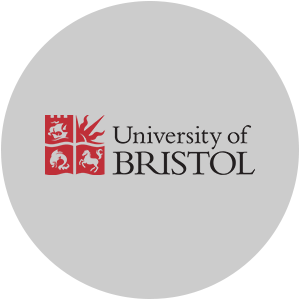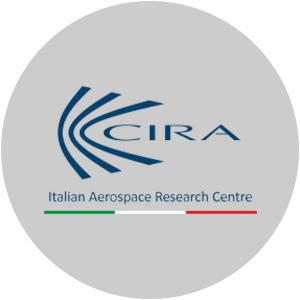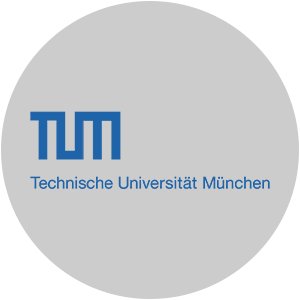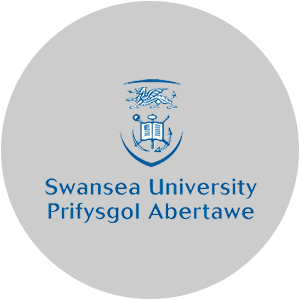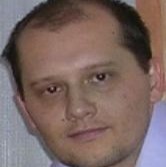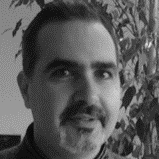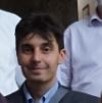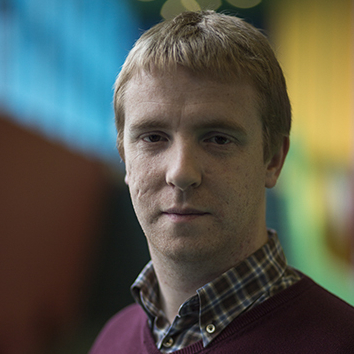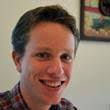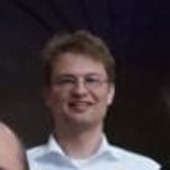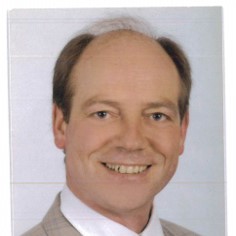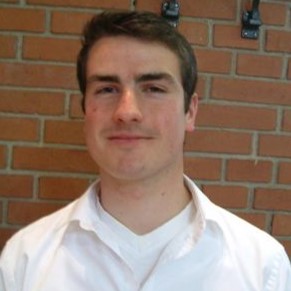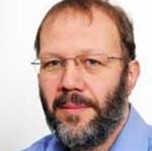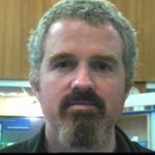Partners
Partners
University of Bristol
United Kingdom
TU DELFT
Netherlands
DLR
Germany
Swansea University
United Kingdom
University of Bristol
Dr Benjamin King Sutton Woods, Principal Investigator
Dr. Woods is a Lecturer in the Aerospace Engineering Department at Bristol University. His research focuses on the development of novel structural solutions to challenging problems in aerospace engineering. This includes a broad range of work on morphing and adaptive aerostructures, development of low cost, ultra-efficient wound composite truss structures, novel energy storage and actuation methods, and reusable composite tooling solutions. The research undertaken by Dr. Woods is concept driven and spans a range of disciplines including structures, aerodynamics, mechanics, kinematics, materials, optimization and design. He uses a variety of analytical, numerical, and experimental tools and techniques to guide technologies from initial conception through increasing levels of technology readiness with a constant view towards commercialization and real world use.
Dr Branislav Titurus
Brano Titurus is a Senior Lecturer in Aerospace Dynamics in the Department of Aerospace Engineering where he contributes through teaching in engineering vibrations and rotor dynamics units. His primary research interests cover passive and semi-active vibration control and damping technologies in aerospace applications, inverse problems in vibrations and Structural Health Monitoring. He has authored eleven peer-reviewed and twenty conference papers as well as a number of industrial R&D reports. He has supervised four PhD students in the field of rotary, fixed wing and aeroengine structural dynamics. His current activities include passive aeroelastic tailoring research for future emission-efficient aircraft developed in £16M Agile Wing Integration project funded by Innovate UK, participation on various industry-focused research projects such the development of the UK National Rotor Test Rig together with Aircraft Research Association in Bedford, UK and Rolls Royce UTC funded research on mistuning and dynamics for metal and composite structures.
CIRA
Dr Salvatore Ameduri
After defending his PhD thesis (University of Naples “Federico II”) dealing with the design of smart structure systems, entered CIRA in 2002 as a senior researcher in the Smart Structures and Materials Department. Author of about 60 Journal and Conference papers (smart structures and materials, morphing, noise and vibration, acoustics), author and co-author of two National and International Patents on a drop nose LE and a SMA based variable chamber TE, reviewer for Journal of Intelligent Material Systems and Structures and Smart Materials and Structures (IOP), awarded in 2014 at the ICMAE Conference for best presentation, played coordination and scientific roles for many Projects; among the most recent ones: o 2016: Project manager of “Graphene-Polymeric Spray Sensor for Shape Recognition of Super-Deformable Structures, GRAPSS” CIRA Internal Project (2016 – 2018); the main target of the Project is the development of the sprayable large deformation graphene based sensor enabling shape reconstruction and SHM operations o 2015: Technical Coordinator of “AIRGREEN 2” Consortium, Clean Sky 2 Program (2015 – 2021); the main target of the Project is the development and validation in relevant environment (WT and flight tests) of technologies for wings of new generation.
Dr Gianluca Amendola
Since completing his masters degree (January 2012), he has been involved with the University of Naples (UNINA) on research activity, in the framework of JTI-Clean Sky project, regarding the numerical vibroacoustic study of an advanced composite fuselage reinforced skin with an innovative damping mechanism and also in the field of adaptive structure (Morphing wing trailing edge design). In particular, he has a performed finite element model of a composite barrel fuselage skin with complex modal simulation and non-linear static analysis with pressure loads. In March 2013 starting PhD in Aerospace, Marine and Quality engineering of University of Naples Federico II, DII (Industrial engineering department) Aerospace Division. The activities concerned the following research areas: smart and adaptive structures, morphing, advanced modeling and stress analysis, ground and wind tunnel tests. In particular doctorate plan consisted of the design and successive manufacturing of a morphing aileron for the CRIAQ MD0505 project between University of Naples (aerospace department), CIRA, Leonardo-Finmeccanica and Canadian research groups (ETS, NRC, Bombardier). Since January 2014 involved in CIRA (Italian Aerospace Research Centre) as permanent contract researcher in the LASA laboratory of Adaptive Structures.
Technical University of Delft (TU Delft)
Dr Roeland De Breuker, Work Package 2 Leader
Dr. Roeland De Breuker is an assistant professor at the Delft University of Technology, section of Aerospace Structures and Computational Mechanics. He is also head of the Smart Structures Laboratory. He joined the Delft University of Technology as Associate Researcher in 2005 after he obtained his MSc degree on the nonlinear characterisation and experiments of piezoelectric benders from the Delft University of Technology in 2004. While working as Associate Researcher, he obtained his PhD degree on the development of design tools for morphing aircraft from the Delft University of Technology in 2011. He was a visiting researcher at the DLR in Göttingen and at Clarkson University in Potsdam, NY. Furthermore he is international member of the AIAA Adaptive Structures Technical Committee. Roeland De Breuker\’s main research activities are morphing and adaptive structures, and aeroelasticity. He is involved in multiple European and national Dutch projects in these two research fields. He was/is involved in the FP7 SADE (on morphing leading edges) and CHANGE (on morphing aircraft design) projects; the CleanSky Smart Fixed Wing Aircraft (for passive load alleviation methods) and LeaTop (on morphing leading edge manufacturing and testing) projects; the CleanSky 2 ReLOAD (on loads alleviation) project; the Marie Curie project AMEDEO (on multidisciplinary optimisation); the H2020 AGILE (on aeroelasticity in MDO) and FLEXOP (on aeroelastic tailored wings for a flight demonstrator) projects and the Dutch national projects FLOW and SmartWind (both on smart rotors).
Dr Mark Voskuijl
Dr. Mark Voskuijl has been Assistant Professor in Flight Performance and Propulsion at Delft University of Technology since 2007. He is responsible for lectures, projects and final thesis work related to flight performance and is coordinator of the Master track Flight Performance and Propulsion. He is a specialist in the field of aircraft performance and is the (co)author of about 50 relevant publications (journals, book chapters, conference papers, patents).
Before joining Delft University, Mark completed his PhD at the Flight Science and Technology research group of the University of Liverpool within the \’helicopter active control technology\’ project, which focused on the benefits of novel active control concepts, applied to the mutual improvement of handling qualities, flight envelope protection and structural load alleviation for helicopters. This project involved close collaboration with the National Research Council of Canada. Extensive use was made of their advanced systems research aircraft, a fly-by-wire Bell 412 helicopter.
Mark\’s interest and passion for the field of aircraft performance was originally sparked by work placements as a graduate student at the handling qualities department of Boeing Helicopters and the helicopters and aeroacoustics department of the Dutch National Aerospace Laboratory (NLR).
DLR
Dr Johannes Riemenschneider
Johannes Riemenschneider, (Institute of Composite Structures and Adaptive Systems) has graduated with a Diplom in Engineering from the Technical University of Braunschweig in 2002. He had been majoring in aeronautics and specialized in light weight structures. After that he joined the German Aerospace Center (DLR) to work as a research assistant. In 2008 he got his PhD in the area of novel actuators – based on Carbon Nanotubes. Since 2009 he is the deputy director of the department of adaptive systems. He is the author of more than 50 publications on conferences and in journals. His research concentrates on adaptive structures and integration of actuation materials into light weight structures. He was and is involved in the design and testing of helicopter rotor blades that can twist. This concept is based on the implementation of piezoelectric elements into the blade skin. He was involved in several EU projects such as CHANGE, SADE and FRIENDCOPTER that were mainly related with morphing aircraft structures.
Prof Berend Van Der Wall
2014 – Honorary Professor at TU Braunschweig
Specialization in:
- Numerical simulation of helicopter rotor aerodynamics, dynamics and its wake.
- Wind tunnel testing of scaled model rotors and helicopter configurations.
- Rotor blade passive design and active control.
Technical University of Munich (TU Munich)
Dr Juergen Rauleder, Work Package 1 Leader
Dr. Juergen Rauleder is heading the rotorcraft aeromechanics research group at TUM and as such, he is responsible for all of the work to be carried out by TUM. The aeromechanics research group within the Institute of Helicopter Technology currently includes four doctoral research scientists and several M.Sc. students. Additional doctoral students will be hired, as the current manpower in the research group does not suffice to carry out the project. Dr. Rauleder holds a Master’s degree in aerospace engineering from the University of Stuttgart, Germany, and a Ph.D. in aerospace engineering with a focus on rotorcraft aerodynamics from the University of Maryland, USA, the world’s largest and most renown institution for rotorcraft education and research. He worked at the Alfred Gessow Rotorcraft Center at the University of Maryland as a visiting scholar and as a graduate research assistant in the rotorcraft aerodynamics laboratory of Prof. Gordon Leishman. Since 2014, Dr. Rauleder leads the rotorcraft aerodynamics and dynamics efforts at the Institute of Helicopter Technology at TUM, where he also teaches two Master’s classes in helicopter aerodynamics (fundamentals and advanced topics). His research interests are the applied rotor aerodynamics and dynamics (i.e., aeromechanics) with a focus on aeromechanical interactions, rotor wake and blade aerodynamics, and vortex flows.
Swansea University
Professor Michael Friswell
Prof Michael Friswell has been Professor of Aerospace Structures at Swansea University since January 2009, and was previously the Sir George White Chair in Aerospace Engineering at Bristol University (2002-2008). He was awarded an Advanced Investigator grant from the European Research Council (2010-2015) to develop equivalent modelling and optimisation strategies for morphing aircraft. Prof Friswell also held a Marie-Curie Excellence Grant in morphing aircraft (2005-2008), was a Royal Society-Wolfson Research Merit Awardee (2002-2007) and was an EPSRC Advanced Research Fellow (1996-2001). He is the author of 2 books, over 300 published journal papers and over 400 conference papers. In 2014, Prof Friswell was awarded the ASME Adaptive Structures and Materials Systems Prize, and the Royal Aeronautical Society Specialist Bronze Award. Prof Friswell is an Honorary Professor at the Nanjing University of Aeronautics and Astronautics, China. He is an Associate Editor of the Journal of Intelligent Material Systems and Structures, is a member of a further 7 journal editorial boards and a member of over 100 conference scientific committees.
Dr Alex Shaw
Dr Alexander Shaw has recently been appointed as a lecturer at Swansea University. He received his PhD from the University of Bristol in 2013 on vibration isolation using the nonlinear deformation of anisotropic plates. Since his PhD, Dr Shaw has completed post-doctoral work at Swansea on the performance of anisotropic morphing skins (the OMSAMA project) and more recently on the nonlinear dynamics of structures and system for the EPSRC Engineering Nonlinearity Programme Grant.
